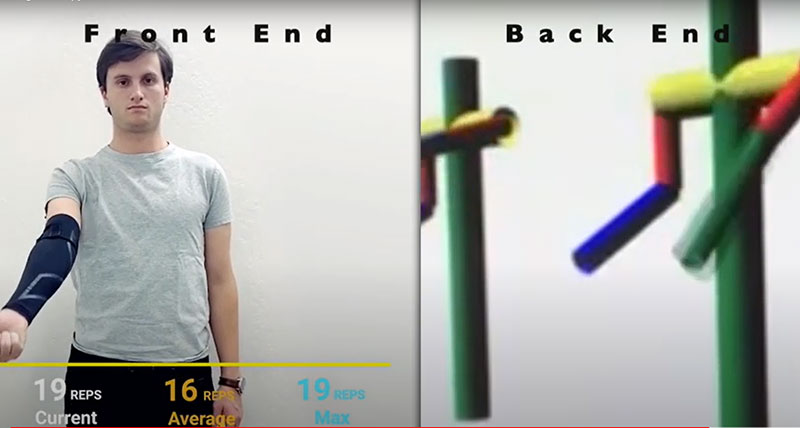When athletes have an injury like an ACL tear that requires physical therapy, they have the best outcomes if they follow their prescribed physical therapy regime. However, most physical therapy programs require a lot of work to be done at home, in addition to live sessions with the therapist. But there’s a problem – many patients find it tedious and so they leave the program. This leads to higher re-injury rates.
Read more Smart Fabric Helps Athletes and Physical Therapy Patients Reduce Injury and Accelerate Recovery
Now, two aspiring Stanford bio-design students; James Savoldelli and Ryan Kalili, are working on finding a better way to engage injured athletes under 30 years of age in home-based physical therapy in order to increase adherence and improve outcomes, reports Stanford Byers Center for Biodesign.
This is How It Works
This unique system from Surge Therapy combines a digital physical therapy platform and a wearable sleeve. The sleeve has integrated sensors that can track the position and speed of the limb and the angles of different joints. Using this combination, therapists can deliver customized home rehab programs to their patients and collect data on their progress and outcomes. Patients are incentivized by participating in Peloton-style virtual group PT sessions that offer friendly competition and the chance to benchmark their progress against others.

An additional benefit is that, because the sleeve provides a full three-dimensional picture of the limb, it’s possible for the system to provide the same kind of real-time feedback that an in-person therapist would provide. It lets the patient know if they are doing an exercise incorrectly and then helps adjust their positioning to the correct movement for optimal benefit. So our solution will be able to increase accuracy as well as motivation.
“This quarter, our focus has been on advancing and testing the prototype. We’ve used the extension funding to hire an expert to help us refine the software, as well as to buy sensors, arm sleeves, wires, breadboards, and all sorts of other equipment. Our near-term goal is to build a more robust prototype that can hold up through more active testing,” says James.
Read more Exosystems exoRehab Gamifies Physical Therapy
“When we first walked into the Biodesign for Digital Health class, we thought, ‘We know the need, we don’t need to interview people.’ But the truth is that you can’t really understand the need – or anything else – until you do the hard work of interviewing people and letting them tell you about their experiences. You’re one person, so you’ve experienced one set of problems. When you interview 100 different people about their experiences, which is where we started, you get a much better sense of the problems that are out there. And that’s just the beginning,” says Ryan.












